Arxan's natural bounty finds fresh fans
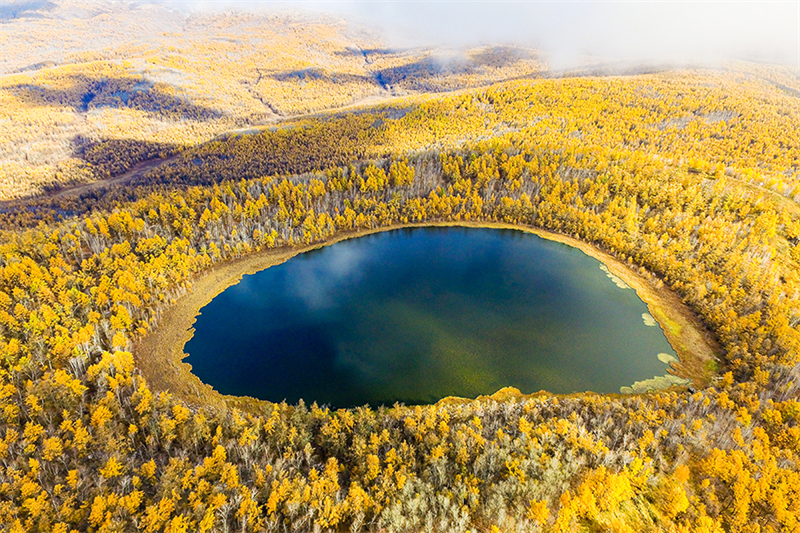
Autumn paints a golden hue to the lush forests in Arxan in Inner Mongolia autonomous region, a prime destination for nature lovers. CHINA DAILY
Once logged, Inner Mongolian's thick forests now echo to the sounds of tourism, Xing Wen reports.
Nestled in the southwestern foothills of the Greater Hinggan Mountains in the Inner Mongolia autonomous region is Arxan, a city where nature reigns supreme.
With forest coverage in excess of 80 percent, Arxan is a place where the shifting seasons give rise to an ever-evolving canvas of vegetation, and an ever-changing tapestry of landscapes.
The area's dense forests and other natural resources have not only fueled its evolution from a timber-dependent economy to a burgeoning tourist destination over the past decade, but have also provided a wealth of artistic inspiration.
Fu Lihong, an Arxan native, is among those who have been inspired.
Three years ago, she started to collect pine cones, pine needles and different-shaped leaves from the forests, and then began skillfully affixing these natural elements to rigid cardboard to create intricate patterns. Using the raw materials provided by Arxan's expansive forests, she made a series of artworks.
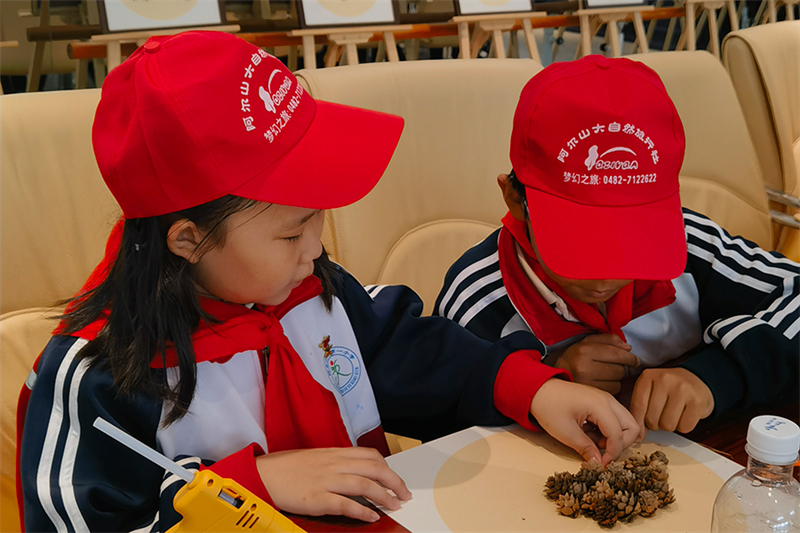
The Arxan native runs a "forest art classroom", where youngsters tour the woods and create art with pine cones and pine needles. XING WEN/CHINA DAILY
Fu's affinity for the forest runs deep and stems from her childhood adventures with her father, who was a forest ranger.
In spring, he took her to see tender green shoots emerging. Summer excursions offered a glimpse of the verdant woods. Autumn expeditions involved gathering ripe fruits from the bountiful trees. All have become cherished childhood memories.
"Pine nuts were the most delicious childhood snacks," she says."My sister and I used to have snowball fights, but with pine cones."
For Fu, each pine cone is unique.
Across the seasons and the years, pine cones present in an array of colors, including pale yellow, golden yellow, light brown, and deep brown. Those that remain on the branch for more than two years undergo a gradual color transition, ranging from gray to black, she says.
Fu has been running a travel agency for 18 years. However, when the COVID-19 pandemic broke out in 2020, business took a severe hit. With plenty of free time, she began spending more time with her then 8-year-old son.
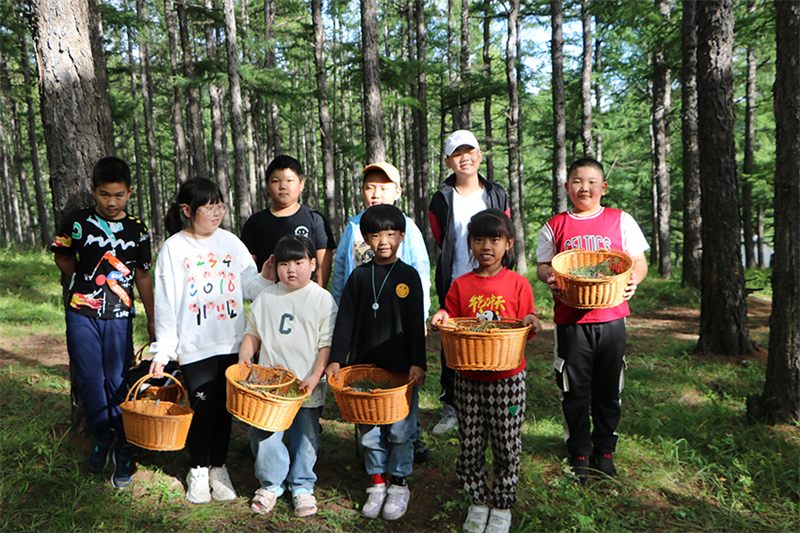
The Arxan native runs a "forest art classroom", where youngsters tour the woods and create art with pine cones and pine needles. XING WEN/CHINA DAILY
Together, they ventured into the mountains, where they listened to the soothing sounds of rustling pine trees, enjoyed the melodies of chirping birds, gathered wild berries, familiarized themselves with plant species, observed woodpeckers foraging for insects, and watched squirrels eating pine nuts.
"I noticed my son became more adept at finding beauty in the world around us, and for me, the anxiety brought on by the downturn in the tourism industry started to ease," she says.
In April, pieces of Fu's art were presented as gifts to diplomats from several African countries during the award ceremony for a China-Africa children's comic competition in Beijing.
Today, Fu has diversified business by launching a "forest art classroom", which combines travel with experiential learning. She takes students on one-day tours into the woods where she introduces them to the beauty of nature and the diversity of plant species, and helps them create art using collected pine cones and pine needles.
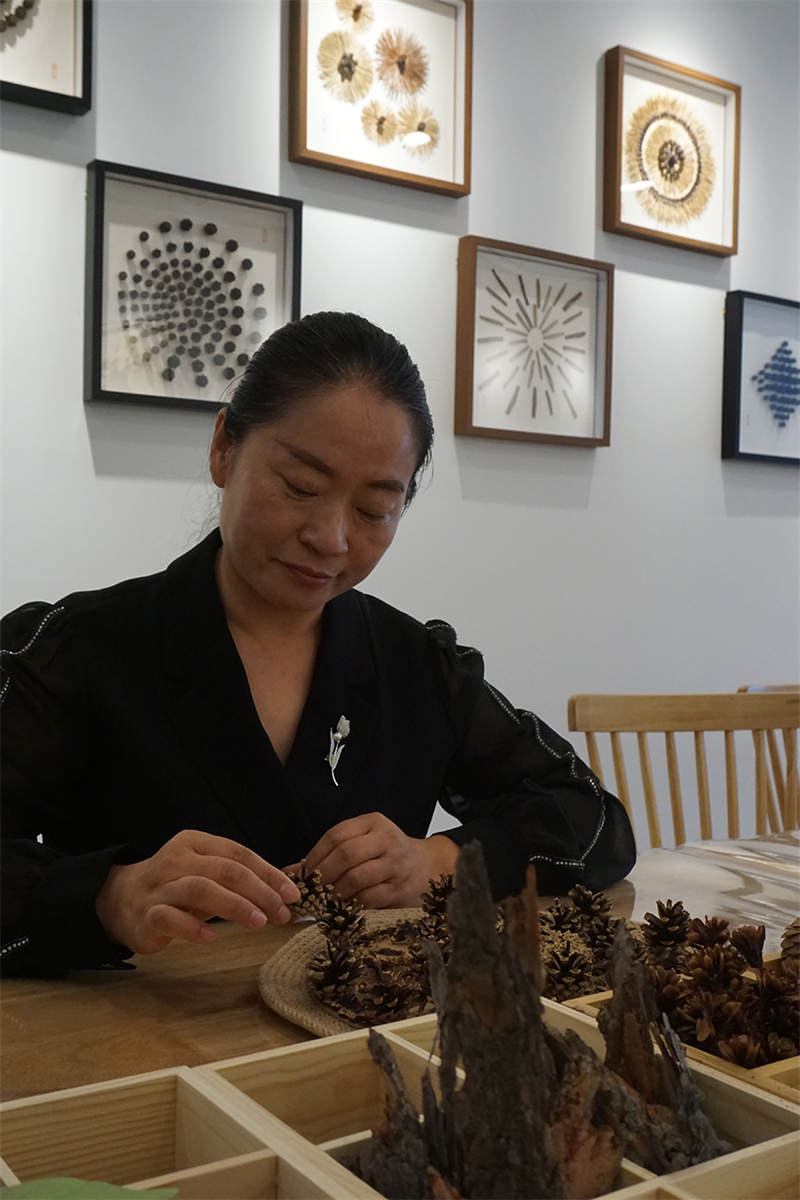
Fu Lihong creates artworks with pine cones in her studio. XING WEN/CHINA DAILY
In her studio, one can find exquisite folding screens, hanging lamps and a selection of furnishings, all ornamented with pine cones. Additionally, she has made aromatic sachets using pine needles harvested during different seasons.
"I hope tourists will be able to bring home the distinct scents of Arxan's forests," she says.
In the future, she plans to create a wider range of cultural and creative products for visitors.
As someone involved in tourism, Fu has seen the evolution of the sector in Arxan.
"In the past, most residents were engaged in logging, but now they can work in scenic areas and hotels, and open shops selling tourist products. The development of tourism has given us more opportunities, and our sense of happiness has also increased," she says.

Forests in Arxan, Inner Mongolia autonomous region, take on varied shades of colors in different seasons. CHINA DAILY
In 2012, Arxan took the lead in Inner Mongolia in implementing a complete halt to logging activities in State-owned forest areas. The city, which had long depended on timber for its economic backbone, shifted its focus toward the vigorous development of its tourism sector.
Over the past decade, it has hosted approximately 30 million tourists and generated around 35 billion yuan ($4.8 billion) in tourism revenue.
More recently, from January to July, Arxan received 2.26 million visitors, a 240.21 percent year-on-year increase, and the sector contributed 3.28 billion yuan in revenue, a 240.08 percent rise year-on-year.
The China (Arxan) Tourism Conference kicked off on Sept 2. It featured a multitude of activities, such as exhibitions of intangible cultural heritage, a photography exhibition, cultural tourism forums, group self-drive tours, a forest music concert, a camping gathering and a firework show, all organized to enhance Arxan's appeal to tourists.
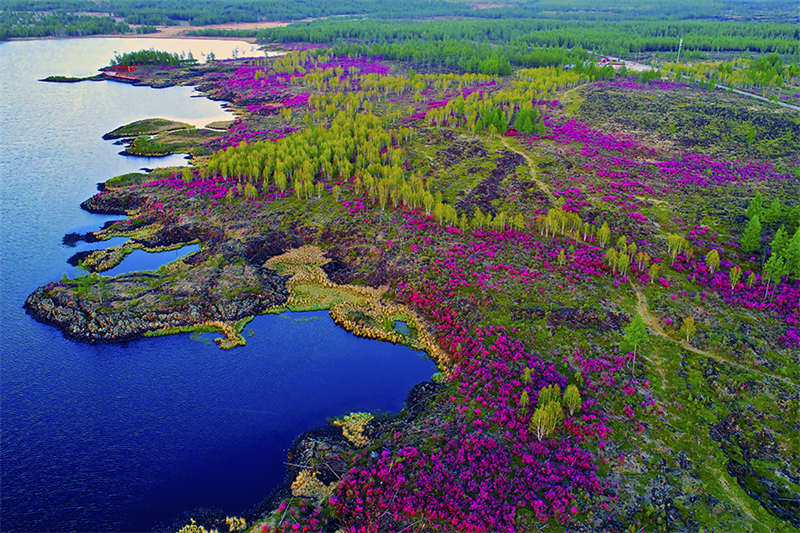
Forests in Arxan, Inner Mongolia autonomous region, take on varied shades of colors in different seasons. CHINA DAILY
Zhang Xiaoli, an official at the Ministry of Culture and Tourism, says that activities like camping gatherings and field study tours not only offer tourists a new experience but also empower rural vitalization through the integration of culture and tourism.
"These activities demonstrate how tourism can contribute to comprehensive rural development and enhance local people's material and psychological wellbeing," says Zhang.



 Print
Print Mail
Mail


